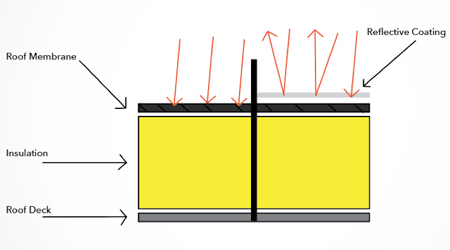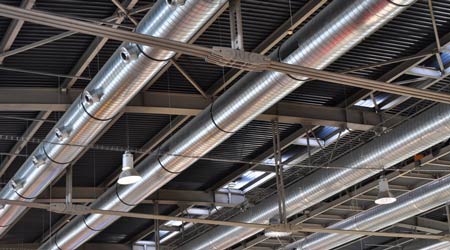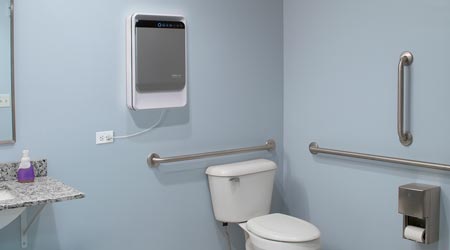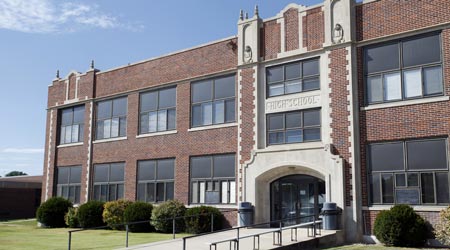
Three Ways to Improve Roof Energy Efficiency
July 8, 2016
While most facility managers are not longing to have deep discussions about thermodynamics with their roofer, there are some basic concepts to understand when considering increasing the energy efficiency of their facility's roof.
Concept 1: Improving the Current Roof
Reflectivity is the first line of defense in keeping a roof cool. The more light a roof reflects, the less radiant heat (the kind of heat that makes your black car seats really hot in the summer) is absorbed. On a hot summer day, a black roof (EPDM, Built-Up & Mod-Bit) can get up to 50 degrees hotter than ground temperature. That heat is conducted downward to the insulation. The heat that the insulation is unable to dissipate is then transferred into the building.
If you have a black roof, the best way to combat this problem (and, in turn, save money) is to apply a reflective coating to the roof surface. This reflective coating will, literally, cool your roof down. Many manufacturers offer 10 year warranties on their coatings, and where a new roof might cost between $5 - $10 per square foot, an average coating cost is approximately $2.50 per square foot. Coatings can be applied to most roof systems.
If the facility already has a white roof (PVC or TPO), most manufacturers recommend low-pressure spraying and cleaning your roof surface every year to maintain its reflectivity. It is highly recommended to contract a professional commercial roofer to perform this task, however. Too much pressure can destroy the roof system.
Concept 2: The Value of R
“R-Value” simply refers to how much heat your insulation can keep from getting into your building. Each building code department has different recommendations and requirements and IECC (International Energy Conservation Code) sets different R-Value requirements for different climate zones. It is important, when replacing your roof, to make sure the roofer puts enough insulation to meet R-Value code requirements in your area. When purchasing a roof, it is also important to understand that insulation is one of the biggest cost factors.
So how many R’s do you need? According to the 2015 IECC, an R-Value of 30 is required when continuous insulation is present in Climate Zone 5. To achieve an R-Value of 30, an average of five inches of Poly-Iso (the most popular/cost effective insulation used in low-slope roof systems) must be present throughout the roof.
It’s worth noting that R-Values have a diminishing return, however. While you may see a significant increase in energy efficiency going from an R-Value of 15 to an R-Value of 30, you will not see the same efficiency gains by going from R30 to R45.
Concept 3: Should you grow plants on your roof?
Vegetative roofing is taking hold in many cities across the country. It has a variety of benefits. It can reduce demand on a city's sewage systems because of water retention. It can help mitigate the urban heat island effects. And it provides something pleasant to look at from the 8th floor windows. Vegetative roofs also increase the R-value of roofs and help to dissipate heat through evapotranspiration.
There are many factors to consider, and it is recommended that you contact a Registered Roof Consultant that specializes in Vegetative Roofing.
Adam Capps is the commercial department manager for UB Commercial. UB Commercial is the commercial division of Universal Builders of America, which has a primary focus on low-slope roof repairs and re-roofing. http://www.ubcommercial.com/
This Quick Read was submitted by Naomi Millán, senior editor of Building Operating Management magazine, naomi.millan@tradepress.com. For more on roof energy efficiency, go to https://www.facilitiesnet.com/11641bom
Next
Read next on FacilitiesNet












